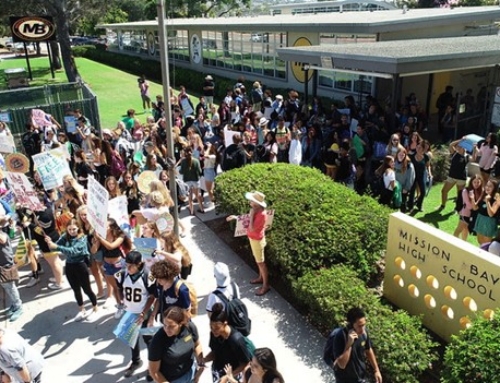![]() One avenue of hope is the growing interest by cities in electric buses (EBs). In terms of GHG emissions, 1 bus equals 20 cars. And most major cities have several thousand buses, so the impact is huge. Recently San Diego received a $41M grant from California’s cap and trade program and the SB 1 gas tax increase. Much of that will go to buy 11 electric buses for the MTS fleet.
One avenue of hope is the growing interest by cities in electric buses (EBs). In terms of GHG emissions, 1 bus equals 20 cars. And most major cities have several thousand buses, so the impact is huge. Recently San Diego received a $41M grant from California’s cap and trade program and the SB 1 gas tax increase. Much of that will go to buy 11 electric buses for the MTS fleet.
Other U.S. cities are also getting on the electric bus wagon – New York City is testing 11 EBs and plans for an all-electric fleet by 2040. Los Angeles will spend more than $36M this year on EBs as part of its plan to have a zero-emission fleet by 2030.
Internationally, London has nearly 200 electric buses, and Paris has pledged for all EBs by 2025. But the international city with the most EBs is Shenzhen, China. With 12.5 million

A worker walks past BYD Co. electric buses parked at a public transportation hub in Shenzhen, China, on Wednesday, Sept. 20, 2017. China, the worlds biggest auto market, may have all buses powered by batteries by 2020 and all other vehicles will follow suit by 2030, BYD Chairman Wang Chuanfu predicts. Photographer: Qilai Shen/Bloomberg via Getty Images
people and horrid air pollution, Shenzhen last year went to an all-EB system – 16,359 EBs total! Overall, China already has 385,00 EBs and is adding 9,500 more every 5 weeks.
So why are cities still buying fossil fuel-burning buses? Simple answer – the cost. An electric bus currently costs much, much more than a diesel or natural gas bus. And then there is infrastructure, namely charging stations. But purchase costs are coming down as production scale ramps up, and fuel/maintenance costs are significantly lower for EBs.
How can STAY COOL help support a transition to EBs in San Diego? STAY COOL is working with SANDAG transportation planners to provide grass-roots support for new ideas such as more EBs. We also will be encouraging federal support for EB funding through our members of Congress. Every FF-burning bus replaced with an EB is a step toward zero emissions.
This post was contributed by STAY COOL Advisor David Engel.



